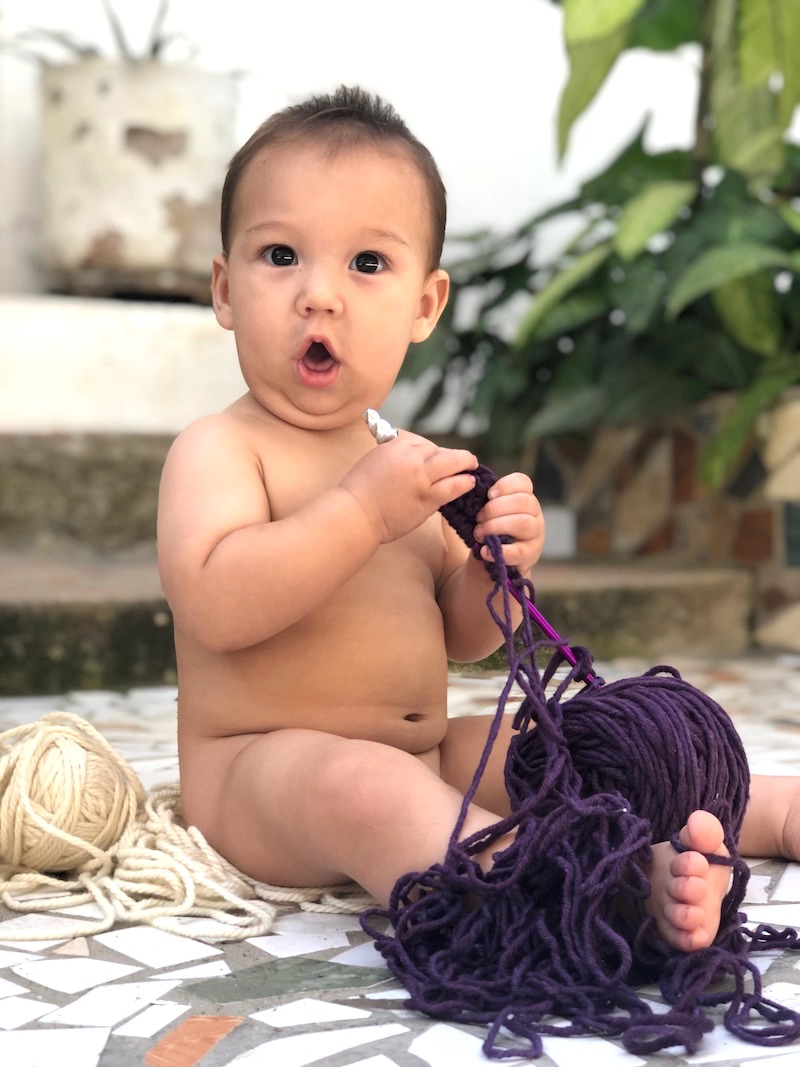
Hi Dears,
How are you holding up? I’m writing this as I have my baby sleeping next to me laying by my side. Blogging by naptimes is definitely a new experience for me, but I’m excited to reconnect with you all.
Do you have any kids that are home with you that might like to teach how to knit? Now that most of the world is staying inside, it may be the perfect time to give it a try.
Here with me in this joint blog post is fiber artist Frances Earnshaw, who actually teaches knitting to kids at the school where she works in England.
Today, we have six tips for you on helping you teach your kids to learn how to knit.
Enter Frances Earnshaw, Fiber Artist and Kids’ Knitting Club Teacher
 A short while ago Liat made a call out on Ravelry’s “Loose Ends” boards for guest bloggers. She is rather busy at the moment with baby Milo. Over the following days, we exchanged messages, and the horrible news about COVID-19 gained momentum.
A short while ago Liat made a call out on Ravelry’s “Loose Ends” boards for guest bloggers. She is rather busy at the moment with baby Milo. Over the following days, we exchanged messages, and the horrible news about COVID-19 gained momentum.
My first idea to blog about teaching children to knit became more relevant, as parents are at home with children all over the world now, in quarantine and home-schooling. Knitting teaches resilience, patience with yourself and persevering when you do not get an instant result. Liat liked this idea!
“…And who are you?” you may be asking. Some of you will know me as Heptonstall on Ravelry. I am British, and like to hang out on the Cats Helping With Yarncrafts thread. I am not famous for anything, but I am a person who loves to support making and learning.
 In with my duties at the tiny Colden Junior & Infants School where I work in West Yorkshire, I began a school knitting club.
In with my duties at the tiny Colden Junior & Infants School where I work in West Yorkshire, I began a school knitting club.
This became hugely popular with thirty five out of the school’s less than one hundred children putting their names down on the waiting list.
In my years of teaching kids to knit, I’ve found there are some popular misconceptions about teaching children and sometimes a lack of insight as to how teaching children knitting might differ from teaching a friend.
I’ll debunk those misconceptions and give you some tips and suggestions plus links to some start-off patterns which have proved popular with the girls and boys I have taught.
3 Misconceptions About Teaching Children to Knit
1 – “There is no point in trying to teach a child under the age of twelve,” or, “My child will just get bored.”
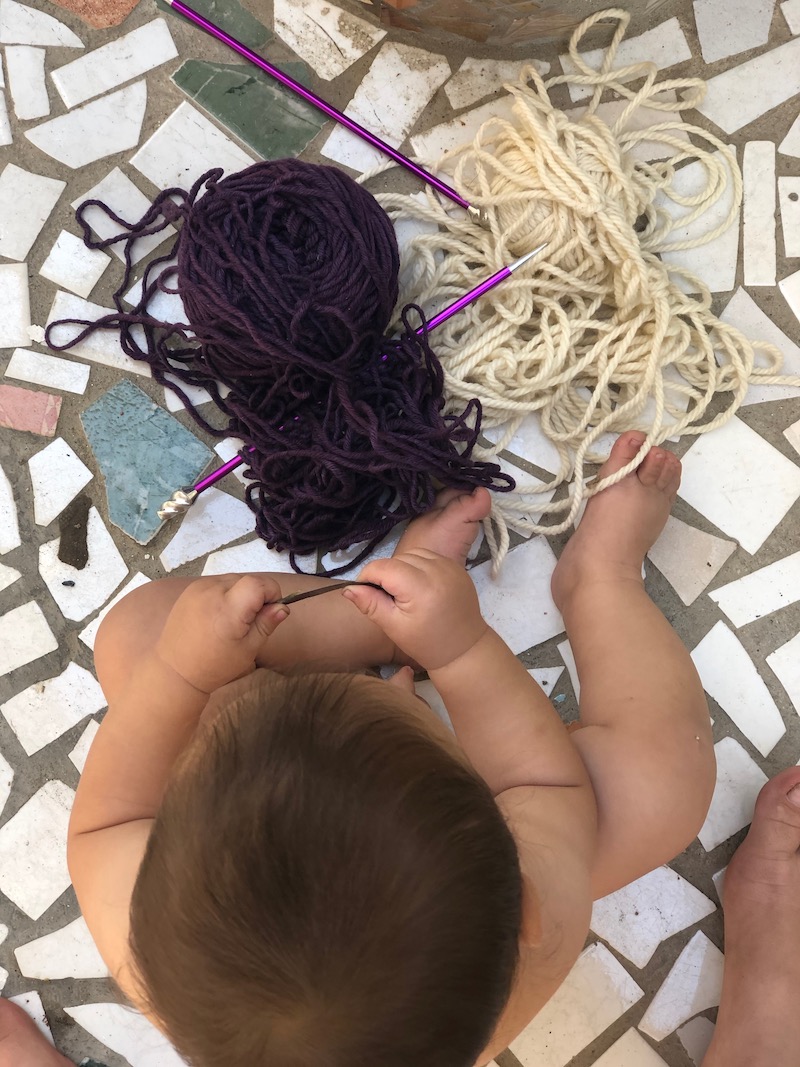 Listen up. Your child is at the optimum time of life to learn and if your child is at an age where they are learning to read and write, and have reached a stage where they are manipulating a pencil reasonably well, then they can learn to knit. I will not stress out about exactly what age this is.
Listen up. Your child is at the optimum time of life to learn and if your child is at an age where they are learning to read and write, and have reached a stage where they are manipulating a pencil reasonably well, then they can learn to knit. I will not stress out about exactly what age this is.
I have taught a six year old, who simply took off with knitting, and is still knitting now age nine.
I have had one or two children begin to learn with me at age nine, then run off. If your child is totally not interested, then they will not learn. Try pom poms!
2 – “You should use large needles and bulky yarn, so the child will get a fast result.”

Nah. Don’t do that. Think back to when you learned to knit.
Would you have liked to learn to knit with a pair of rolling pins, and some pretty colored rope? Probably not.
Children’s hands are small.
I bought Pony children’s knitting needles, 4mm (US size 4). They are short and flexible and ideal for small hands.
The excitement of learning a new skill will be enough to motivate them to keep them going.
3 – “Children will get too upset when they make mistakes.”

Here is something from Liat’s post on growth mind-set: “We love making mistakes at KnitFreedom!
If you’ve been watching my knitting videos for a while, you’ll notice that I often make mistakes while filming. It’s hard to see everything when you’re focused on a camera screen!
Usually when I make mistakes, I say, ‘Oh good! Now I can show you how to fix this.'”
It’s the same with teaching kids how to knit. Get excited when they make mistakes! You can always show them how to fix it, or fix it yourself for now. (See my Fix Knitting Mistakes video class to learn how).
3 Tips for Successfully Teaching Kids Knitting
1 – Make the Sessions of Teaching Short
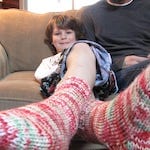 It is fine to work for ten minutes, then relax for a few minutes, and then go back to it.
It is fine to work for ten minutes, then relax for a few minutes, and then go back to it.
No more than twenty minutes a day, unless your child asks for more.
2 – Work Alongside your Child
 Use a calm voice, and repeat information just like your driving instructor:
Use a calm voice, and repeat information just like your driving instructor:
“Into the loop with the tip of the blue needle, over with the yarn, catch that yarn through, let the loop on the orange needle drop off.” (Another reason to use kids’ needles – they come in different colors.)
Don’t fire information at your child. Don’t talk a lot. Show the child repeatedly, but hand the knitting back to the child frequently.
3 – Don’t Begin by Teaching the Child to Cast On
 A new skill which is struggled over then immediately abandoned to tackle another difficult skill will cause frustration. Skills need to be consolidated.
A new skill which is struggled over then immediately abandoned to tackle another difficult skill will cause frustration. Skills need to be consolidated.
Cast on and explain to your child that you will be teaching them how to cast on later, but their first job is to learn to make stitches.
In my experience it takes around four sessions, where I have seen a child engaged and working at it, before they are knitting fairly on their own.
And they are just delighted at this, if they have the resilience to keep trying.
I tell them straight-up, “This is not so easy. You will not learn straight away. It took me a while. But you will do it. Look! Your fingers are doing it!”
Recommended Beginner Patterns for Boys and Girls
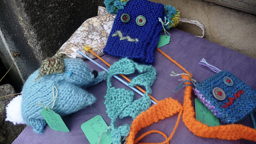
The Handy Monster is the first project my students get. Children simply knit a small garter rectangle.
The rectangle is folded and embelished. This is my project page with all the instructions you will need.
Their second project is Knitted Bunny by Jackie Erickson Schweitzer.
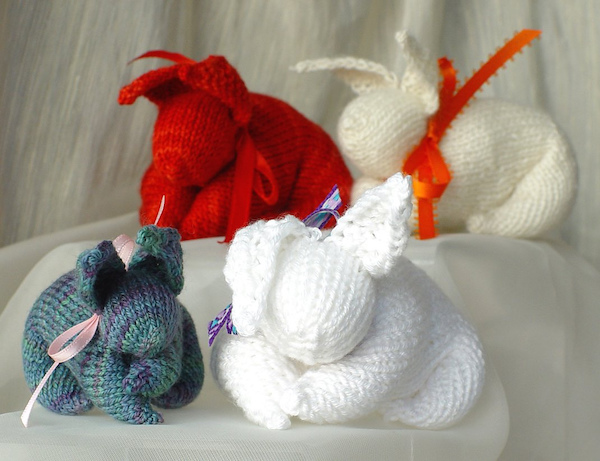
This free pattern is amazing! The child knits a stockinette square, and some clever sewing enables them to turn this into a bunny.
When the child has stayed with it and completed the Handy Monster, they have the skills to manage the purl stitch rows. I did knit the ears for a couple of the children.
A child of seven managed a garter Knitted Bunny. She was so happy!

Thank you Frances! I’ve taught a few kids how to knit in my life, and I can definitely vouch for these tips.
My Experience Teaching Kids to Knit
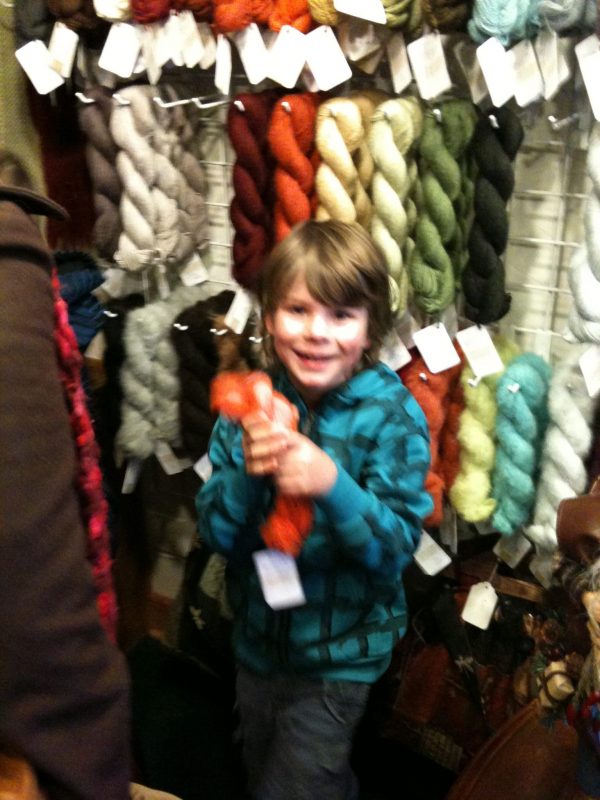 The first time I tried to teach a kid to knit, I taught my boyfriend’s son, but I made it way too hard for him because I tried to teach him how to cast on first. By the time we finished, he was done trying. I definitely agree with Frances – skip the cast on for now; just do it for them and let them get right to the knit stitch.
The first time I tried to teach a kid to knit, I taught my boyfriend’s son, but I made it way too hard for him because I tried to teach him how to cast on first. By the time we finished, he was done trying. I definitely agree with Frances – skip the cast on for now; just do it for them and let them get right to the knit stitch.
Years later I taught my nephews how to knit, and they had a much better experience. I used brightly colored knitting needles and solid-colored yarn so they could see what they were doing.
I also had them watch my videos on KnitFreedom to help them along when they wanted to do it on their own and I wasn’t available, even though we were living together. They actually really enjoyed watching my videos to show them how to do things. Kids nowadays love videos and it’s very easy for them to learn this way.
Resources for Beginning Knitters
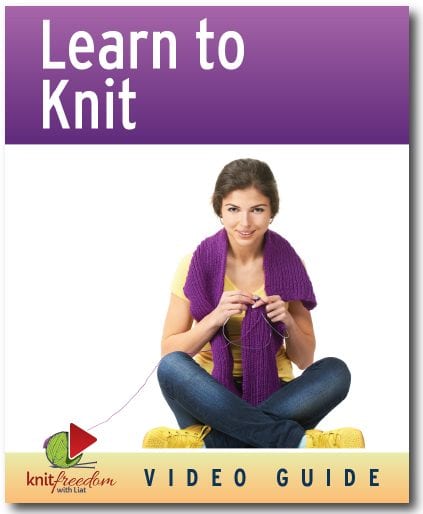 Please remember that my learn to knit video class is completely free. If you sign up for the newsletter, you can download the class as a PDF eBook, or you can watch it in your browser or on your mobile phone, and you can show kids videos on how to knit.
Please remember that my learn to knit video class is completely free. If you sign up for the newsletter, you can download the class as a PDF eBook, or you can watch it in your browser or on your mobile phone, and you can show kids videos on how to knit.
Maybe my guidance might be just what they need if it’s a little bit too much for you to sit down and explain to them every little piece.
 If you’ve already taught someone how to knit, but they don’t really know where to go after the first plain garter-stitch scarf, I recommend my course for adventurous beginners called The Fearless Knitter.
If you’ve already taught someone how to knit, but they don’t really know where to go after the first plain garter-stitch scarf, I recommend my course for adventurous beginners called The Fearless Knitter.
This course starts with the purl stitch and goes from there.
We cover so much information about reading your work, making mistakes, reading simple patterns and knitting things that are fun and rewarding that it will help create a perfect foundation for your little knitter to become a knitting superstar.
New! Free 30-Minute Support Calls for Premium Lifetime Members
 If you are looking for extra personalized help, I have started offering a free 30-minute support call for any customers that have purchased our Premium Lifetime library.
If you are looking for extra personalized help, I have started offering a free 30-minute support call for any customers that have purchased our Premium Lifetime library.
There are so many resources in KnitFreedom Premium that I want to help you make sure that you know where it will be best for you to get started depending on what your goals and dreams are. Check out what’s available in KnitFreedom Premium Lifetime, and I look forward to talking to you soon.
Leave a Comment
Have you taught any young friends or family members how to knit? What was your experience? Do you have any tips to share? Leave a comment and let me know!
Next up on the blog will be another joint post with knitter Krystal Stoll, where we will teach you a new method of stranded colorwork. See you soon!

 Guest blogger Frances Earnshaw lives and works in Yorkshire in the UK. She loves to support making and learning, and is on a mission to explore knitting techniques and to teach knitting to all ages. You can find her as Heptonstall on Ravelry. She is an artist who incorporates knitting into her work, and her eccentric artworks and knitting can be viewed here: https://www.instagram.com/frances.earnshaw/
Guest blogger Frances Earnshaw lives and works in Yorkshire in the UK. She loves to support making and learning, and is on a mission to explore knitting techniques and to teach knitting to all ages. You can find her as Heptonstall on Ravelry. She is an artist who incorporates knitting into her work, and her eccentric artworks and knitting can be viewed here: https://www.instagram.com/frances.earnshaw/

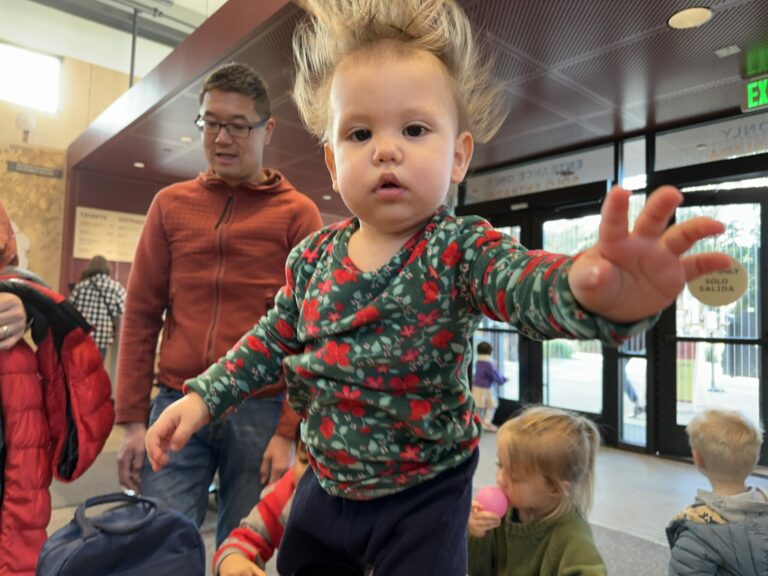
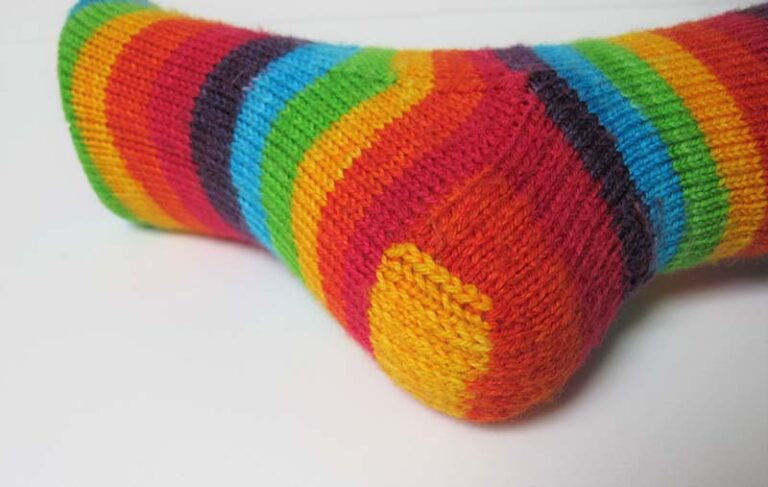
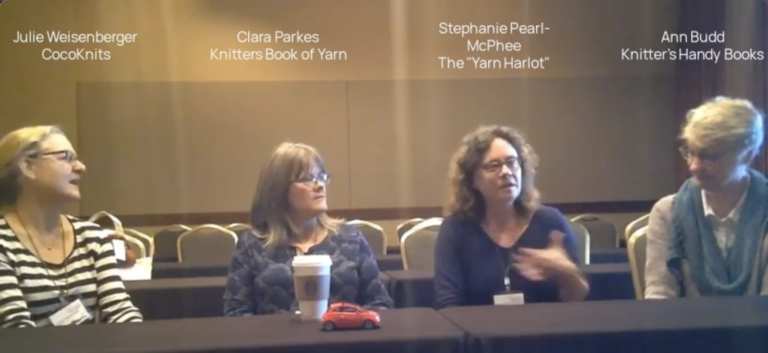
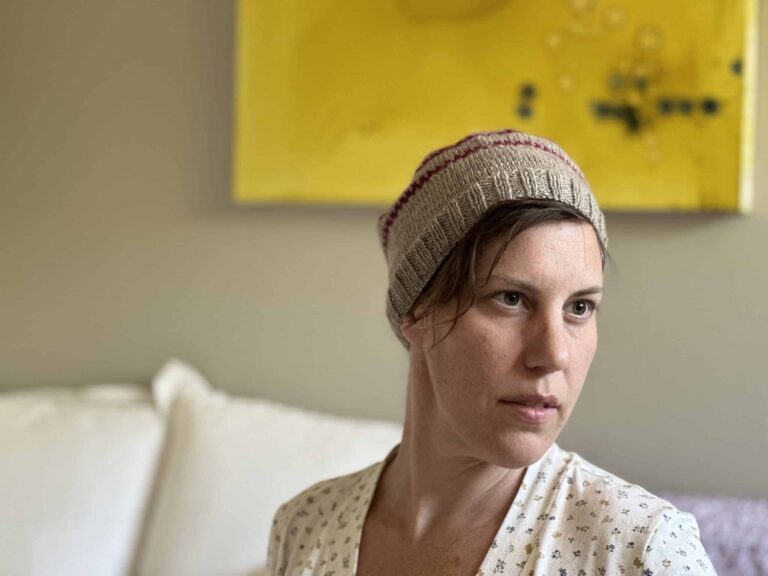
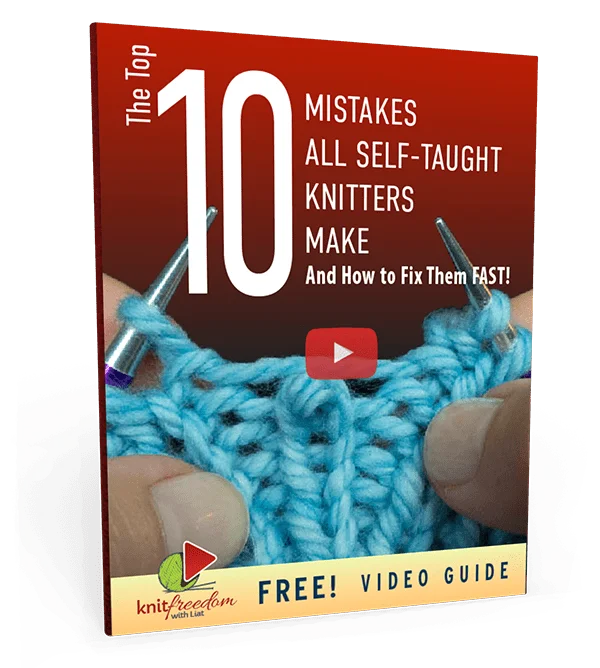
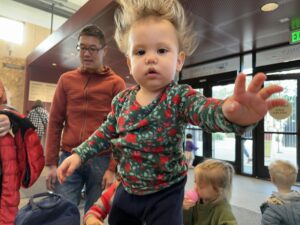
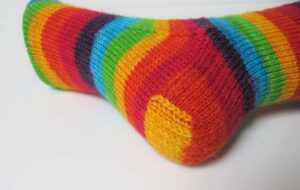
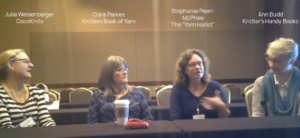

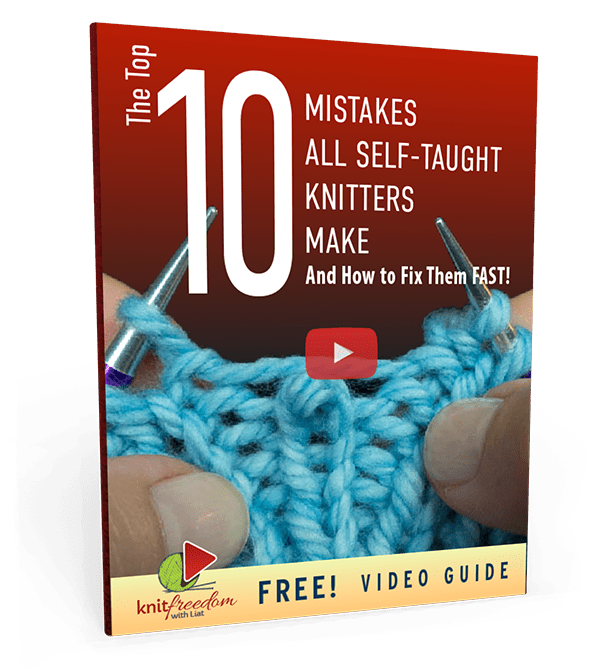
20 thoughts on “Six Tips for Teaching Kids to Knit at Home”
I’ve taught many different beginners to knit. I find the hardest to teach are left handed knitters because I am right handed and I throw. Often I teach lefties how to pick. I actually taught one lefty in a learn to knit socks class and we all succeeded in knitting a full pair of socks.
But most recently, I taught my granddaughter (9) and her friend (10) how to knit using Susan B Anderson’s KID’S KNITTING WORKSHOP. It teaches them to start by knitting in the round. I helped them to cast on, I helped them to join the round by laying it on a table to show the twists all went to the center, and then they knit, knit, knit the entire project. We started with the Little Hat, which we then gave away to a baby center for single mom’s. Next they knit their own stripey hats. We learned about gauge here. They knit the head bands next and finally they finished up with the Fox Pillow. Would love to send you the pictures.
Because they were so easy to teach, I offered to teach an after school girls’ program. The girls ranged from 6th grade to seniors in high school with two adult supervisors. That was great fun, too. Again we started with Susan’s Little Hat and ended up donating 12 hats to another baby pantry for moms and tots. I have to say teaching the two at 9 and 10 years was a little easier, but all were having fun and I learned more than they did, I’m sure!
Amazing! Thank you so much for sharing this. I would really appreciate you sending photos and also links to the patterns you recommend. Send them to [email protected]. I’ll update this post and add your info!
Thanks,
Liat Gat
KnitFreedom.com
Loved today’s newsletter! I learned how to knit at 5 and am still knitting 43 years later. I’m about to start teaching my own 5yo, who has been asking to knit for a little while now, and will be coming back to the patterns and techniques you’ve recommended, thank you!
Hooray!! I’m so glad to hear it. My son is 3 1/2 and every time he sees my yarn he says, “I want to crochet!!” Your comment and recent ones from other students have inspired me to get him his own yarn and needles already so he can enjoy knitting just as we do.
I’m going to look for some rainbow yarn for him, that’s his favorite color… ☺️
When I was visiting Iceland, I noticed yarn was sold everywhere including gas stations and grocery stores. My niece explained knitting is taught in school so everyone knows how to knit. It’s a national skill. She was out hiking with a friend when he noticed a bit of his sweater was coming undone, so when they got back to the car he reached into the glove box for his knitting needles and repaired it on the spot.
Hi Janice,
I’m going to be passing your comment along to Liat, but I want to let you know that she is currently on maternity leave (she is expecting her baby very soon) and will be taking up to 1-2 weeks to answer.
Thanks so much for your patience and understanding!
Best,
Elias
Janice this is amazing. I can only imagine a land in which everyone knows how to knit. What happiness! Can you imagine having that in common by default with everyone around you??? Thank you for sharing this story!!
Liat
Hello i am looking for a begin to behave knit present for my 5 1/2 year old grandson. I can cast on, pearl plain and cast off so i guess i can teach.
Any ideas on where to buy in Australia?
Thanks Kathy
You are so welcome, Liat. I appreciate you as a teacher — IMO you are the best knitting teacher online. Period. And I count my great teachers as my great fortune: Mrs. Lorraine Salisbury (Baldwin Drive Elementary School, 4th grade), Mrs. Evelyn Lewis (JFK High School, Phys. Ed.), Master Roy Osborne (Shorin-ryu Karate), Dr. Kathleen Haney (University of Houston, Philosophy), Mr. Lorenzo Thomas (University of Houston, American Literature and Cultural Studies), Ms. Liat Gat (Knitting). That’s 6 Great Teachers over 59 years. I don’t approve of Identity Politics per se, but I’d like to point out that of the 6, 3 are black and 2 are Asian Americans. And Mrs. Lewis has a son, Carl, who you might recognize as perhaps the eminent athlete of the late 20th century, from his 4 Gold medals in the 1984 Olympics to his many World Championships, yet to me, the best part about watching Carl Lewis compete was seeing Mrs. Lewis in the stands. (She turned 90 last October!)
One disagreement, however: You said that it’s easiest to count stitches in groups of 5. I tried that but it wasn’t very fast or flexible. What works best for me is groups of 3. 3 is so easy and quick to count, and it’s divisible in far more combinations than 5. For instance, my basic stitch count is 30, which can be 10 groups of 3 or 5 groups of 6. After my first 30, I can add 3 more groups for 39, 4 more for 42, 5 more for 45, etc. For a large stitch count, I divide it into groups of 30, and it literally zips right along. Honestly, I tried your 5-count for a while but it was just too slow for me. When I realized that I was naturally dividing each 5-group into counts of 3 + 2, that’s when I realized that 3 is my magic number! And there you have a real-life demonstration of math in knitting!
As to your advice on changing my avatar, doing it via Gravatar worked perfectly! Now everybody can see the real me! I like the way I look better than using a fictional character, don’t you? LOL
Yay! Yes, I love seeing the real you! And wow – I’m so honored to be among your favorite teachers. Thank you so much for sharing your journey and soul on this blog. I’m enjoying getting to know you better.
Hugs,
Liat
I’d like to add to what Frances said about what knitting teaches (with which I wholeheartedly agree), that ”Knitting teaches resilience, patience with yourself and persevering when you do not get an instant result” — something really valuable to understand and accept while in quarantine!
In addition, here’s my observations on what knitting teaches:
(1) math skills — addition, subtraction, multiplication, division; eventually to Möbius strips and beyond!
(2) how to read technical writing — very important in today’s marketable skills.
(3) an appreciation for all things tactile — touch and feel are so often ignored, as is the importance of all things tangible (Helen Keller both knitted and crocheted)
(4) an understanding of color in all its variations, an area of scientific exploration not stressed often enough. Chromatics (the science of color) is incredibly interesting; it expands from simple math into physics and beyond: https://en.wikipedia.org/wiki/Color
(5) muscular coordination and strength — Fingers are wonderful tools, and string is so much fun to manipulate. Who hasn’t played Cat’s cradle? (https://en.wikipedia.org/wiki/Cat%27s_cradle)
(6) artistic expression — Knitting is an art, as we can see on Ravelry, Instagram, and all over the internet.
(7) the pure joy of the doing, whether the project is ”finished” or not — It should be called The Joy Of Knitting — failure is taken in stride, rather than being a crushing blow to the ego. Why do you think tinking is an art in itself?
Just my thoughts on why crafts in general and knitting in particular should be learned as early as feasible in one’s life … or indeed whenever possible. When you have a hobby like knitting, it can be useful, become one’s career, express artistry, or just be a relaxing, meditative occupation. One thing is certain: you will never be bored!
Wow, Hollis, I love the thought you put into this comment. I wholeheartedly agree and think that the points you made are so important. Thank you so much.
Another tip to share: for when a child’s body is not yet understanding.
I say “Come be my puppet,” and they sit with their back to my front.
I tellthem to make their arms and hands floppy like a rag doll.
I take each of their hands in my hands, and do the knitting for them, reciting the poem.
That way, they are looking at the knitting happen in front of them the way it will when they are independent. Their arms experience the required motions, and you can gradually ‘let go while still covering the backs of their hands’ until they are mastering the action themselves.
Apologies for my late reply. Usha, What an interesting story. There have been some very interesting stories shared in various discussions on the Loose Ends board on Ravelry, where discussions arise on this subject. The folks most confident about a child’s ability to manage this skill are those from families where they were taught to knit at a very young age themselves, and I detect a cultural trend here! A Raveler from Eastern Europe described a similar early expectation and being taught to knit by a grandmother. Learning to contribute to the needs of the family seems to me one of the best possible life lessons. My North of England background is a little similar, and my sister and I did housework and took the weekly wash to the launderetted and back every week. This did not mean we were constantly working, but we did have to help. Wish my mother had been a knitter!
Deb, I thank you for appreciating my Instagram posts! I am a mix of artist, knitter and teacher and so it is an eccentric mix! I do love the connecting which goes on, and seeing something unexpected.
And to the knitter who wrote, ‘I say “Come be my puppet,” and they sit with their back to my front.
I tellthem to make their arms and hands floppy like a rag doll.’ – that is sheer genius!
I have a tip to share – old rhyme for young knitters learning:
In through the front door,
All around the back,
Through the open window,
And off pops Jack!
(reverse where appropriate for purl)
Dear Liat,
Thank you for this wonderful post – what a joy to see the photo of your beautiful baby boy.
In these strange and difficult times, I feel very fortunate to be a knitter, to have a calm space to knit, and to be able to buy yarn and materials. Knitting is such a calming and enjoyable activity. Although I’m in the grandmother age-range, grandchildren have not yet come into my life but maybe one day … Meanwhile, I recommend your website and videos to everyone I know who is learning to knit.
Thanks also for introducing us to Frances Earnshaw. I went straight to her Instagram (which is truly beautiful) and feel I have yet another connection in the great chain of knitters across the world.
I am so happy to read about the possibility of having a 30-minute phone call with you as part of Premium Membership. I will definitely explore this with you.
Deb (Sydney, Australia)
Yay! Thank you so much, Deb, for your kind words! I do hope you schedule a support call with me. I’d love to get to know you better and help you any way I can.
Hugs,
Liat
DearFrances,
You can add to your stories that I myself was first taught to knit at the age of four, and therefore as a classroom teacher, set about teaching anybody of any age at all to knit – for precisely the reasons you spoke of. I believe it is easier for a toddler to clutch two knitting needles in their fists than to hold a pencil to make it write; and the eye-hand co-ordination required to achieve even one stitch has already developed the brain’s ability to learn on, throughout life!
My grandmother informed me that as the eldest daughter (firstborn too) my knitting job was to make socks for the family. So that’s whatI aspired to, at the age of four. And that’s what she taught me. And that’s what I did, therafter – she also taught me darning, which I liked less, so to avoid excess darning, she taught me to knit the socks properly in the first place. May well have been taught herself at that age, and for that purpose…
Frances, aka “Usha”
(a firm Liat Gatt lover)
PS tell Liat that my very first nephew was named Milo – after Milo Minderbinder in Catch 22
It’s a great name – he is now in his forties. And can knit (taught by me, when he was little)
What a character yours looks to be!
Hi Usha!
So great to hear from you! Thank you so much for sharing your story. I had no idea that you had knitting instilled in you at such a young age. Four years old! You have inspired me to try with young Milo when he reaches that age.
Big hugs to you, and thanks so much for staying in touch.
Liat
Apologies for my late reply. What an interesting story. There have been some very interesting stories shared in various discussions on the Loose Ends board on Ravelry, where discussions arise on this subject. The folks most confident about a child’s ability to manage this skill are those from families where they were taught to knit at a very young age themselves, and I detect a cultural trend here! A Raveler from Eastern Europe described a similar early expectation and being taught to knit by a grandmother. Learning to contribute to the needs of the family seems to me one of the best possible life lessons. My North of England background is a little similar, and my sister and I did housework and took the weekly wash to the launderetted and back every week. This did not mean we were constantly working, but we did have to help. Wish my mother had been a knitter!